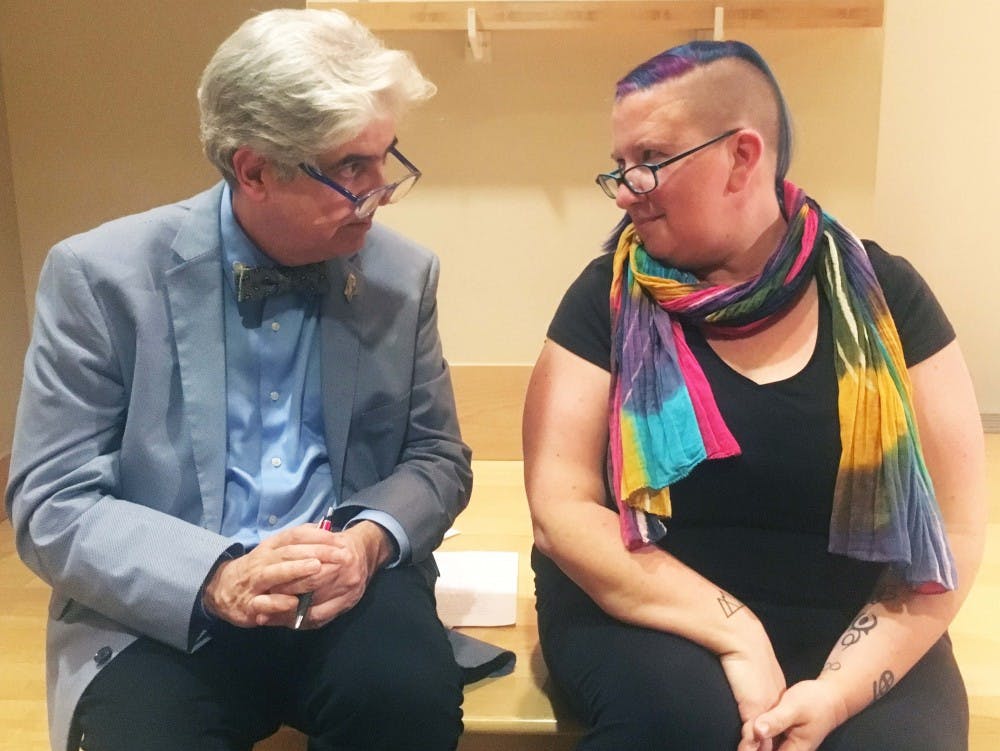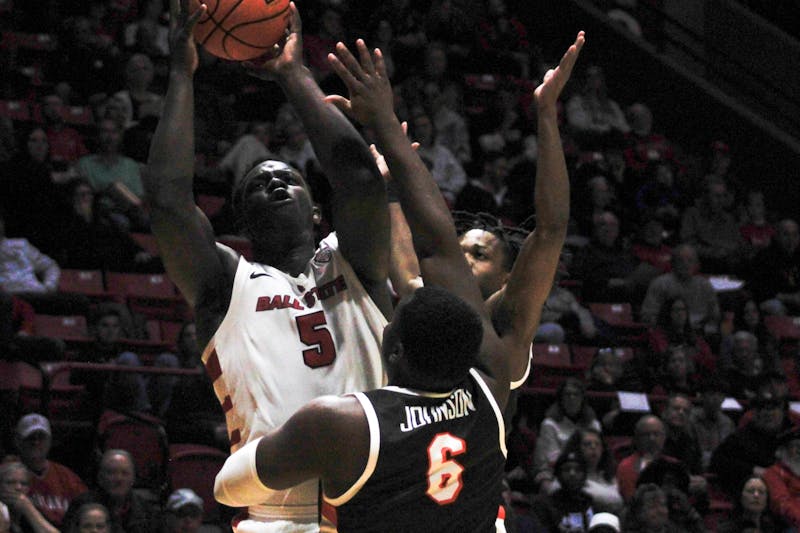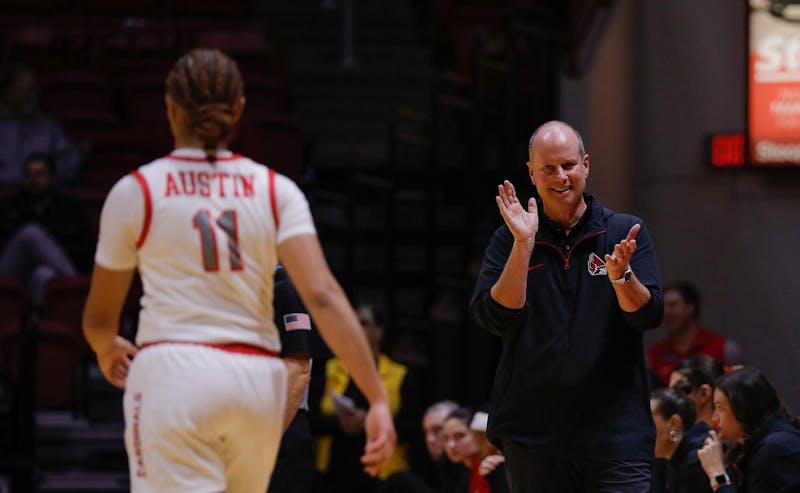“Michael Martone was born in Fort Wayne, Indiana, or maybe Scott County, Iowa … His nickname was Dolly or peanut or bug or Michie. He’s written more than a dozen books, maybe more. He might be a fiction writer or nonfiction hybrid.
“Not much is sure about Michael Martone other than the fact that he loves Indiana, the number four, the Midwest, stories about place, the open road. And that he’s well known for his contagious, delightful quirkiness. His permission to explore and experiment in writing extends to all writers, new and experienced alike.”
Joj, creative writing graduate student, had “the enormous honor” to introduce Michael Martone, author and professor at the University of Alabama, as part of the Visiting Writers Series hosted by the Ball State English Department.
“When you read ‘Michael Martone’ by Michael Martone, his stories change with every page, so I just went through and found all the ones I thought were so funny where there might be a grain of truth, but you don’t actually know. I wanted to have that question, which is why I filled my introduction with so many maybes and mights,” joj said. “But the main thing I wanted was for the truth. The truth is the little snippets that I said at the end. I wanted the quirky things to be in there, along with all of the things that everyone knows him to be.”
Martone’s uncle Wayne Payne, a retired Ball State health and science professor who still lives in Muncie, sat among the crowd with his wife during one of many readings he has attended for Martone.
“[Martone] got started seriously writing in high school. He would write poems at the courthouse square in Fort Wayne for a quarter. So, if you were in town shopping or having lunch, this young guy would write you something for payment,” Payne said. “He was also an incredibly good athlete, but when he made the decision in his junior year that he wanted to be a writer, he, of course, made the choice to give up what could have been a very successful athletic career.”
With 25 collections under his belt to date, Martone has achieved his high school dreams, creating characters and pushing the boundaries of genres with stories that typically revolve around cities in Indiana.
Unlike most speakers, the first thing Martone did after settling himself at the podium in AJ 225 was ask audience members to put his phone number into their phones. He told an anecdote of watching guests at a reading at Penn State text every time he looked up.
“I wanted to be in on whatever they were talking about,” Martone said. “So, ever since then, I ask all of my audiences to text me during my readings. It’s weird now that we live in this electromagnetic soup, and as writers, we are constantly surrounded by text. But I want to be a part of the conversation. It may take me a few weeks to respond, but I will respond to everyone.”
During the reading, Martone read five pieces he selected, including two that were rejected by the magazines he submitted them to.
“I’m gonna read something that was rejected, so I’d tried to exceed the prompt, but I didn’t quite make it,” Martone said, before reading “Thermostat,” a piece he wrote for the online magazine, Nerve. “Because most of us are writers in the room, we should share our rejection and support each other.”
Many of the other pieces Martone chose for the event referred to Ball State or Muncie in some way, including “The Musee de Bob Ross” and “Winesburg, Indiana” which both had parts set in The Village and on Ball State’s campus.
The longest piece Martone read was from the book he recently finished, “The Complete Writings of Art Smith: The Bird Boy of Fort Wayne,” the inventor of sky writing.
“The first writing in the sky was over Fort Wayne, Indiana. How cool is that?” Martone said. “So, I had to write a book about it. I just made up a lot of the things he writes because there isn’t a lot of documentation, but he died in 1926 in a plane crash, of course. All of the ‘chapters’ start with a word formatted to look like what Art would have written in the sky.”
Out of all the books, short stories and essays Martone has written, Payne said his favorite will always be the very first book, “Michael Martone” because Martone talks a lot about his mother.
“All of his works are easy to read, but when you are a part of the author’s family, you know the real person that he has fabricated. In all of his books, he has killed his mother multiple times,” Payne said. “Sometimes it is hard to find things funny which he means to be humorous because you know he’s twisting a person you know and putting them at the wrong place at the right time.”
“Michael Martone” is also joj’s favorite because it taught her about flash fiction and condensing.
“Yes, he was instrumental [for me],” joj said. “That’s why I said he gives us permission to experiment because I had never written flash fiction, but reading his first book, which is all flash fiction, really inspired me to learn about condensing. I tend to be verbose, so I can write and write about a tiny thing, but reading his works has really taught me to revise efficiently.”
Within the next year, Martone said he plans to retire from the University of Alabama but doesn’t plan to stop writing.
“I think Michael would say, ‘I’m as much of an essay writer as I am any other type of author.’ He takes short stories and meshes them together to create one larger piece. His works run from almost incredible beyond belief because they are beyond belief all the way to books that sometimes touch you,” Payne said. “I’ll continue reading his works until he stops writing them.”
Contact Tier Morrow with comments at tkmorrow@bsu.edu or on Twitter @tiermorrow.





The Daily News welcomes thoughtful discussion on all of our stories, but please keep comments civil and on-topic. Read our full guidelines here.